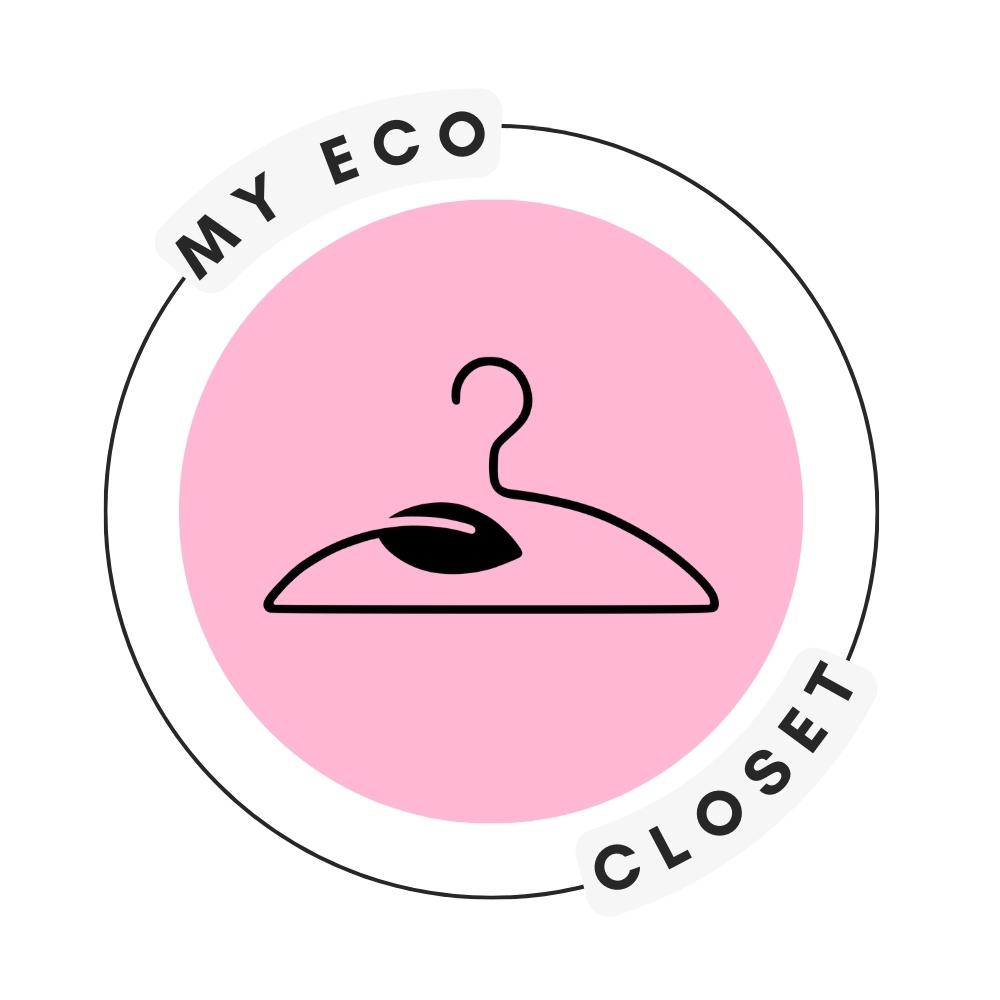Aritzia, a popular Canadian fashion brand, has made public claims about its commitment to sustainability and working towards a more eco-friendly future. But, given its practices and materials, many consumers are left wondering: Is Aritzia just another fast fashion brand in 2024?
In this guide, we’ll examine Aritzia’s sustainability claims, questioning whether they truly align with the brand’s actions—or if it’s simply “greenwashing.”
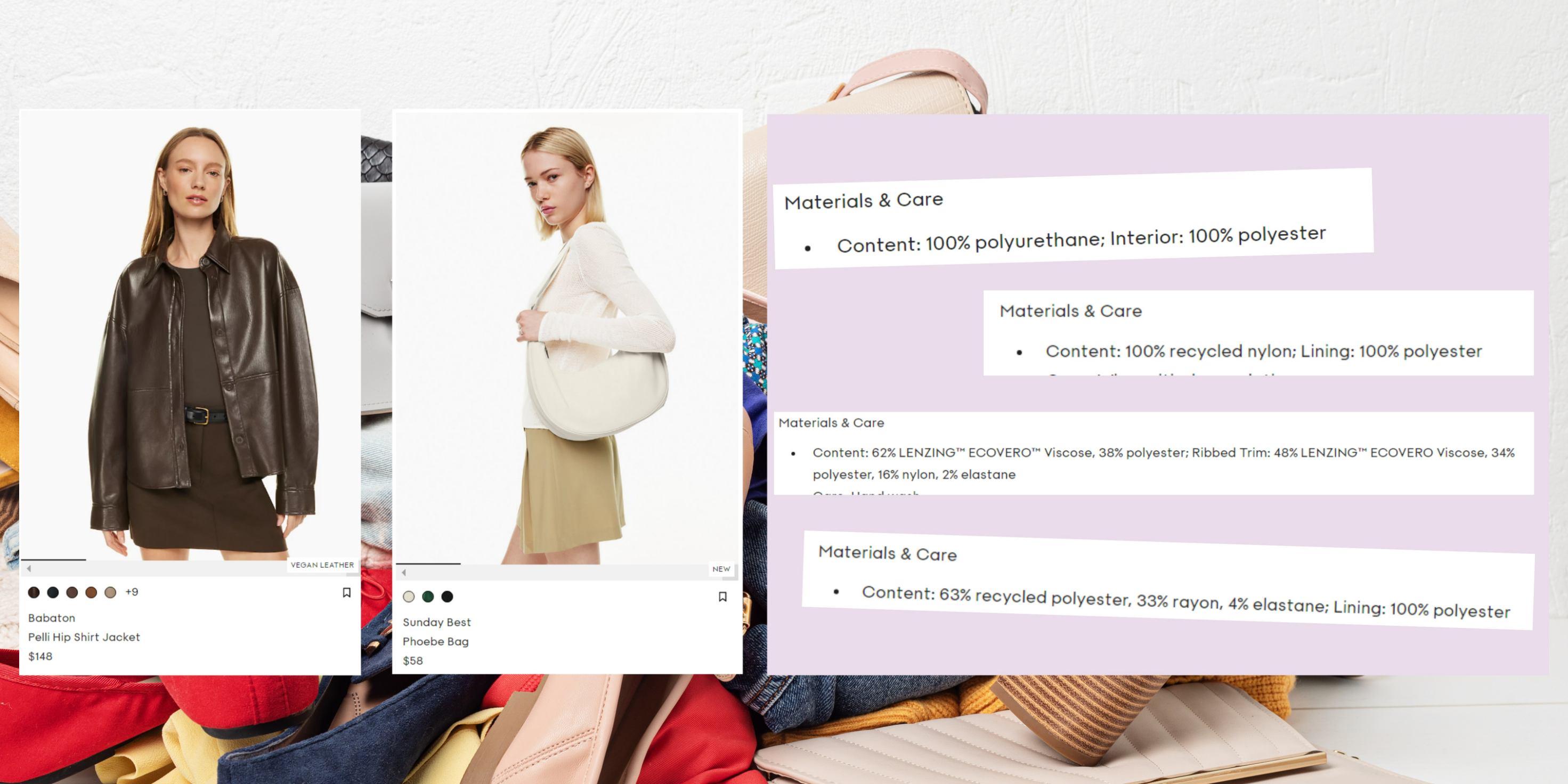
Is Aritzia Fast Fashion?
Aritzia is a premium brand that aims to offer “Everyday Luxury”—stylish, high-quality products in aspirational stores. However, it has been criticized for perpetuating the fast fashion model. The brand relies heavily on synthetic materials, overproduction, and questionable claims about sustainability, all of which are hallmarks of fast fashion.
“Brands need to be transparent about their materials and manufacturing processes so that consumers can make informed choices. Banning fur is a good start, but it’s not the only issue we need to address.”
Clare Press, sustainability editor-at-large for Vogue Australia

Aritzia And Sustainability: What We Know So Far
Aritzia has made some sustainability moves, but there are significant contradictions in its practices. For example, the brand banned fur in 2010, which it touts as a key ethical milestone. However, it continues to use non-biodegradable synthetic fabrics, which contribute significantly to environmental harm.
In 2024, Aritzia expanded its sustainability efforts by banning angora and mohair, supposedly in support of animal welfare. But, the truth is, these fabrics can be ethically sourced, and Aritzia’s blanket ban on them may be more about image than actual impact. Meanwhile, the brand continues to use materials like rayon, viscose, and polyester, which have severe environmental and ecological consequences, including marine pollution and toxic chemical runoff.
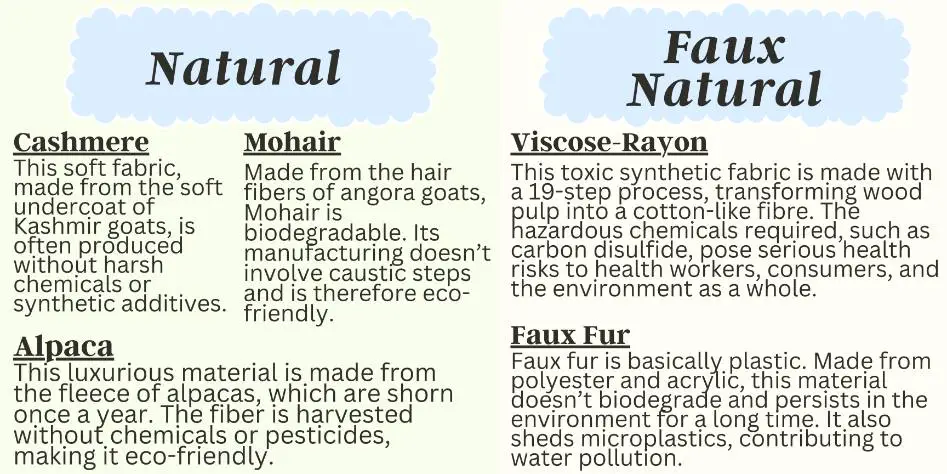
Is Aritzia Fast Fashion? Synthetic Materials
Aritzia’s fabric choices raise concerns. The brand uses a mix of natural, synthetic, and animal-derived materials, but the majority of its offerings are synthetic, such as lyocell, viscose, polyester, and modal. While some of these materials are ethical, the majority of them raise serious environmental and safety concerns.
In Aritzia’s ESG sustainability Report for FY2023, the brand provides the following insights:
- From 2021 to 2022, Aritzia increased its use of synthetics from 36% to a whopping 44%
- Aritzia decreased its use of cotton from 39% to 32%
- This reduction trend extended to animal-derived fabrics as well, as the brand minimized the overall use of animal materials from 16% to 12%.
The overarching pattern here is evident: Aritzia is saying NO to natural fabrics while prioritizing non-biodegradable synthetics, such as polyester, polyamide, nylon, and elastane.

Toxic Fabrics at Aritzia
Let’s look at a regular sweater from Aritzia. As you can see above, it is made of a semi-sustainable cellulosic fiber, called ECOVERO Viscose, as well as virgin synthetics – namely, polyester, nylon, and elastane.
These synthetic fabrics represent one of the most toxic clothing materials in fashion, as they’re derived from fossil-based chemicals. Polyester, elastane, and nylon contain carcinogenic compounds like formaldehyde, phthalates, azo dyes, and heavy metals, such as lead and cadmium. These compounds leach into the air, water, and later, our closets, bioaccumulating in our tissues and causing long-term damage.
Given this, we don’t recommend trusting Aritzia’s claims about animal welfare or sustainability, particularly when it comes to fabric choices. By promoting petroleum-based materials, the brand contributes to irreversible textile waste and exposes consumers to harmful toxins.
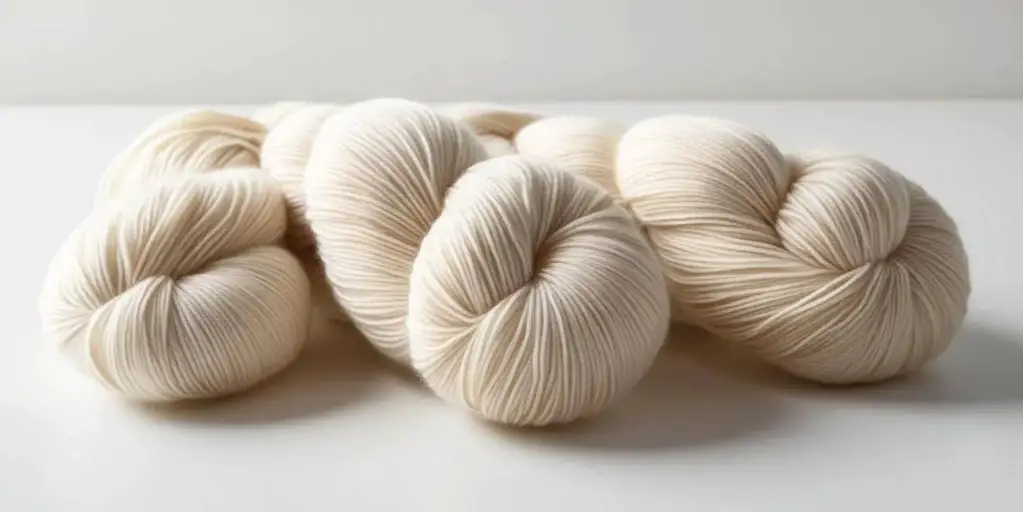
Does Aritzia Use Ethical Fabrics?
Aritzia is proud to be part of the Good Cashmere Standard (GCS) initiative. This means they source ethical cashmere that cares for the well-being of cashmere goats and their environments. Celebrating this, the brand asserts that 52% of its fall and winter 2022 cashmere items consisted of responsible cashmere.
While this sounds like a substantial milestone, the catch here is the following: responsible cashmere only makes up 4% of Aritzia’s animal material use. The majority of its animal-based materials are sourced in a questionable manner.
What’s more, looking at the bigger picture, animal-derived materials make up only 12% of Aritzia’s overall collections, which are dominated by synthetics. This further illustrates how small of an impact the Good Cashmere Standard (GSC) initiative makes.
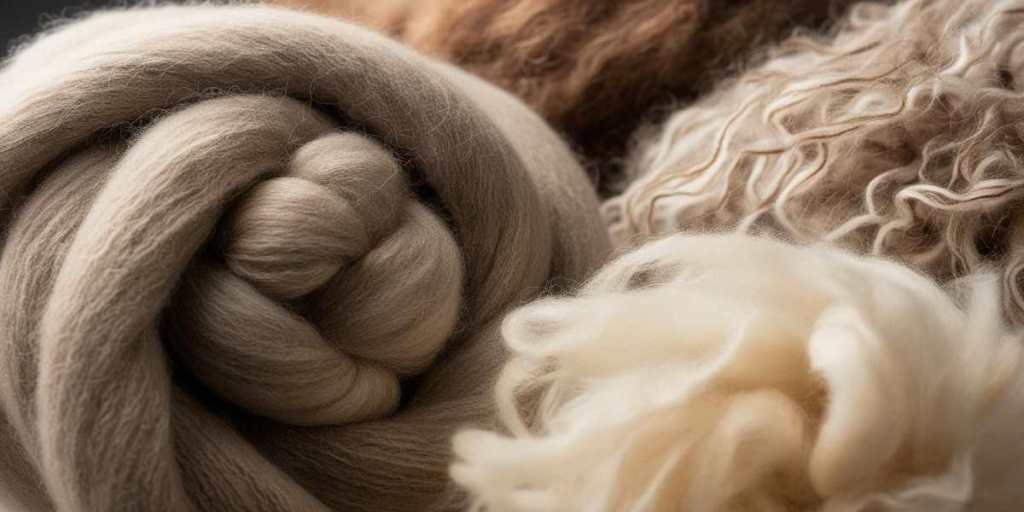
What About Other Animal Fabrics at Aritzia?
As explained above, Aritzia’s use of responsible cashmere is minimal. The same applies to the brand’s Responsible Wool Standard (RWS) and Responsible Down Standard (RDS) initiatives, which only cover a small portion of its wool and down materials. For instance, RWS-certified wool accounts for just 2% of its animal-based fabrics, while 72% of Aritzia’s animal textiles are made from conventional wool, including merino.
Clearly, Aritzia needs to address the sourcing of the majority of its animal-based fabrics. However, the brand has postponed this goal, aiming to make all its animal-derived materials responsible by FY2027.
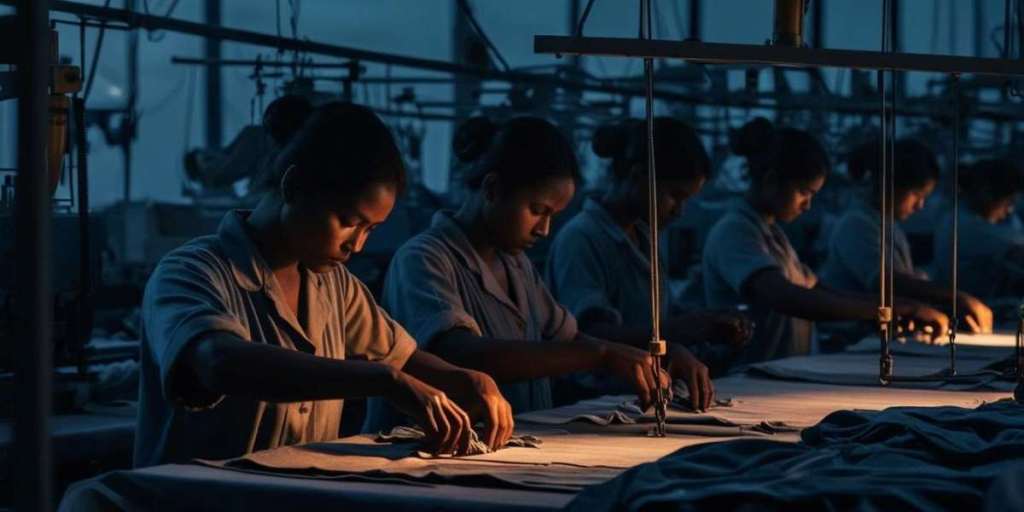
Aritzia’s Efforts Towards Ethical Labor: Superficial or Not?
On the supply chain front, Aritzia has proudly joined the Sustainable Apparel Collection and Better Cotton Initiative, working with the Better Work program and becoming a member of the Textile Exchange, as a step towards ethical labor.
This may signal the brand’s willingness to set measurable goals and commit to green causes, which is a potential step toward driving real-life impact. However, we still have no evidence that the brand uses ethical labor. That is, currently, Aritzia’s labor practices can’t be verified via third-party audit organizations.
Does Aritzia Use Ethical Labor?
When it comes to labor and the creation of ready-to-sell items for Aritzia, they’ve partnered with fabric suppliers and factories in countries like Vietnam, Turkey, Romania, Cambodia, and China, but we do not know more specific information on whether forced labor is involved or where the clothes are made.
Remarkably, the brand promises to never source materials or services “in regions tied to forced and child labor” in its supply chain. However, its products are tied with problematic countries in the Global South, where workers live below the poverty line and work in dangerous conditions.
Only a fraction of Aritzia’s suppliers is certified by labor standards, which ensure worker health, safety, and labor rights. This is yet another indicator that Aritzia is, in fact, a fast fashion brand.
Moreover, Good on you has rated their labor standards as “not good enough”, due to the lack of evidence around the company’s commitment to paying its workers a living wage. Lacking transparency in its supply chain, Aritzia implements questionable practices to support diversity and inclusion, and the third-party reports proving otherwise are severely lacking.

Aritzia’s Positive Community-Building Initiatives
In 2020, Aritzia announced a donation of a thousand of their signature Super Puff jackets to underprivileged Canadian women and adolescent girls during winter holidays. The campaign was a part of the brand’s Community Giving Program, which empowers the local community suffering from socioeconomic obstacles.
Overall, the brand has donated over 100k garments to Union Gospel Mission, impacting women struggling with homelessness in Vancouver, Canada. What’s more, Aritzia has donated $60 million worth of products through Aritzia Community partners, assisting more than 700k people.
As a result, Aritzia received a recognition from the Retail Council of Canada for the Excellence in Retail Philanthropy Award.
A Failing Sustainability Mission?
In 2020, Aritzia pledged openly to become carbon neutral, accounting for 100% of the carbon they emit through their offices, stores, and distribution centers. However, the brand fails to provide any evidence as to doing so.
Aritzia has been given an overall 21-30% score by the Fashion Transparency Index – the same score as the prior year’s report, indicating the absence of real-life progress in transparency and overall sustainability.
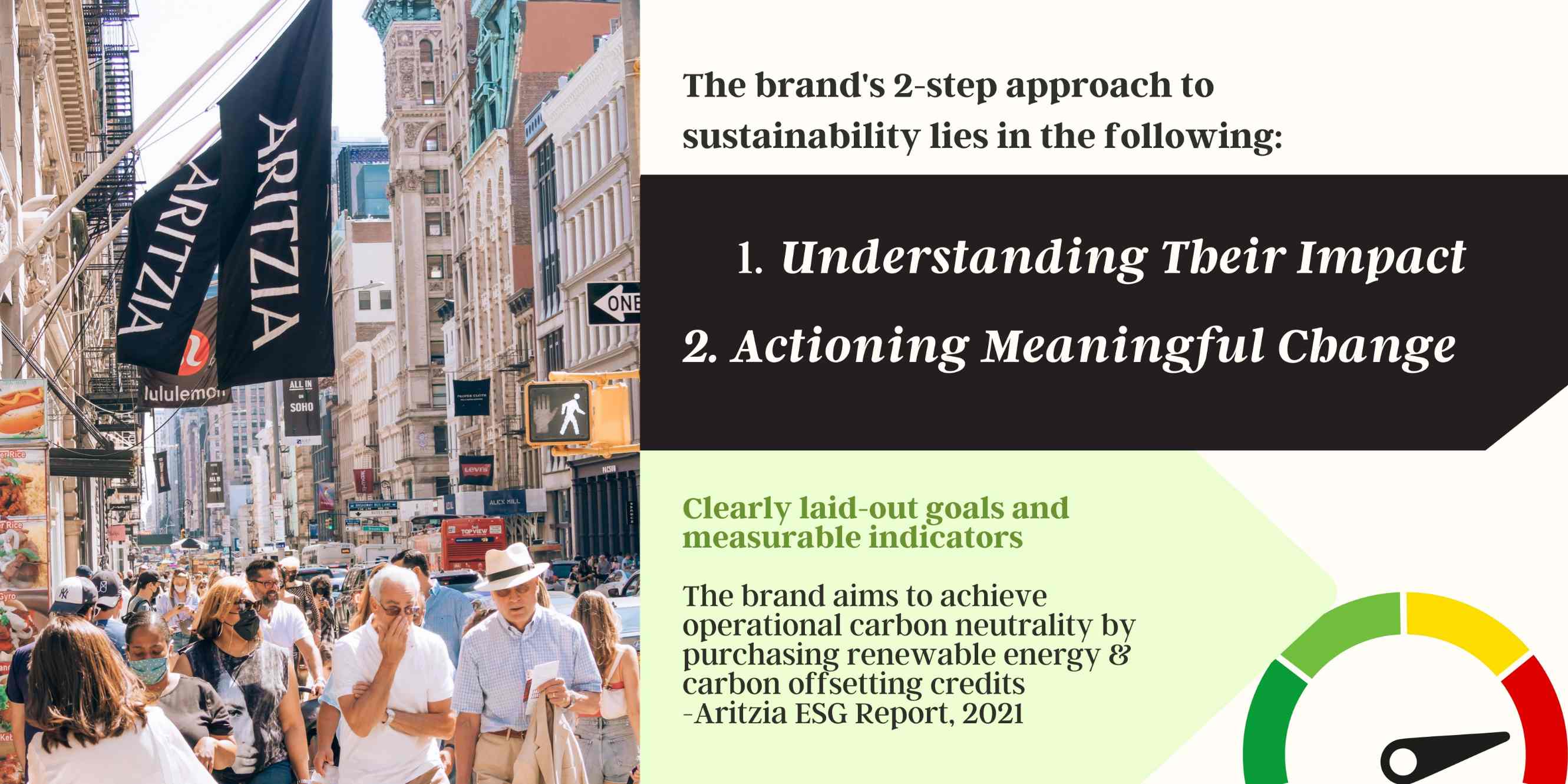
Aritzia’s Vision for the Future
Based on its sustainability vision, Aritzia seems to strive towards going green. It has signed on to set science-based emissions targets within the next two years. This seemingly bold pledge comes as a part of the brand’s partnership with the Science Based Targets initiative – a global effort helping companies transition to a net-zero economy.
Does this initiative mean that Aritzia will walk the walk, beyond just talk? Well, not necessarily. The brand’s target-setting process is now incomplete. However, even if it was put in place, the SBTi itself raises many questions about its validity.
As in the case of a fast fashion brand, Guess, many retailers join the industry’s efforts to reduce emissions, aiming to keep global warming below 1.5C, which aligns with the Paris Agreement objectives. Yet, the SBTi group faces criticism from experts due to several reasons, such as:
- charging retailers a fee for accreditation (indicating its potentially commercial motives)
- not having a large validating team
- giving retailers a free hand to modify and set their targets via questionable tools

Fashionable Minimalism or Just Clever Marketing?
Aritzia’s style focuses on simple, minimalist designs in neutral colors like white, beige, gray, and black. This clean aesthetic gives the impression that the brand values sustainability and makes high-quality, long-lasting products.
However, this minimalism often hides a different story: encouraging more consumption. While Aritzia promotes the idea of buying fewer, better-quality items, its heavy use of influencer marketing suggests otherwise. This is evident in the brand’s focus on influencer marketing, with Kendall Jenner sharing a photo of her Super Puff coat proudly with her enormous audience of 100 million followers.
Using influencers to drive sales is a common tactic in fast fashion. One of the first-ever fast fashion conglomerates, Fashion Nova achieved a growth rate of 600% in a year with this approach, and Aritzia seems to be following a similar strategy, leveraging its strong network of influencers.
However, in fashion, actions speak louder than words. Aritzia’s simple designs may look eco-friendly, but the brand doesn’t have the evidence to back up its aesthetic facade. Instead, it mimics the style of truly sustainable brands without committing to their values.
Ultimately, just because something is simple or expensive doesn’t mean it’s sustainable. Without real action, Aritzia’s minimalist designs are more about appearances than actual ethical practices.
Brief History Behind Aritzia’s Popularity
The reason behind Aritzia’s popularity lies in its trendy brick-and-mortar stores. The retailer has been operating over 100 boutiques in Canada since its launch in 1984, as it has become one of Canada’s most popular brands ever since. It caters mostly to women through chic, elegant, and minimalistic mid-priced pieces, which are sold in the most unique, urban spots.
The brand relies heavily on physical stores, as its e-commerce sales only amount to the 33% of the total revenue. Like Mark Petrie mentions, Aritzia’s stores lay at the “intersection of value and quality”, which cultivates an inviting atmosphere, luring consumers to linger in the store for longer and purchase more clothing (either now or later, online).
Is Aritzia Fast Fashion? Our Final Verdict
With all this in mind, it is time for the final judgment of this particular Canadian brand. Taking into account their commitment to sustainability, yet their lack of evidence to back up almost any of their public claims is concerning.
The fact the brand seems to very conveniently exclude crucial information, such as where its factories are located or who makes its products in more detail, is yet another red flag raised. In conclusion, don’t let the premium prices fool you – Aritzia is most likely a fast fashion brand.

FAQ
Is Aritzia Considered Luxury?
With trendy yet affordable pieces, Aritzia appeals to mid-luxury and mainstream customers –particularly, Gen Z and Millennial women. The brand stands at the intersection between luxury and fast fashion, producing durable clothing at affordable prices.
Is Aritzia Clothing Expensive?
Justified by overhead costs like rent, in-store experience, and staff compensation, the outrageous prices of the Aritzia apparel reflect high costs of brick-and-mortar retail.
What Age Group is Aritzia For?
Aritzia’s market share is spread across its 18.87% male and 81.13% female customer segments. Overall, the brand targets Gen Z and Millennial consumers aged 18-24 years old.
Why Do Consumers Like Aritzia?
People enjoy shopping at Aritzia because of their beautiful store designs and immaculate in-store experiences. Besides, they sell affordable, chic items, which appeal to fast fashion consumers who turn a deaf ear to the brand’s sustainability.
